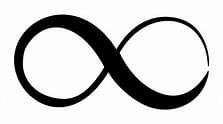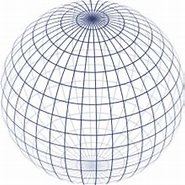..so scientific theories are not scientific theories, if they are not (or cannot) be tested.
Yes.
It must followed the guidelines of Methodological Naturalism and Scientific Method.
The Scientific Method have many steps, but it be broadly divided two main sections:
- Formulation of a hypothesis.
- Testing the hypothesis.
The first part - formulating the hypothesis -
Always begins with OBSERVATIONS (to the phenomena) follow by QUESTIONS about those observations.
This is usually followed by RESEARCH, attempting to find solutions to the questions.
Then the next step is using the research, to FORMULATE THE HYPOTHESIS, which involved
(A) explaining WHAT the phenomena are, and HOW the phenomena work; the explanations would often include logical models, like formulas or equations (these are maths are the “proofs”);
(B) based on the explanations, above, scientist would make some predictions, some sorts of like baseline for the expected outcomes when the scientist test the hypothesis;
(C) the hypothesis should also include instructions of how one would test the models within a hypothesis - like where & when to the evidence, or how one would perform the lab experiments.
The second part - testing the hypothesis -
Following the instructions of (C), one would actually TEST each model separately by finding the evidence, or by performing experiments. The more evidence and test results from experiments, the better chance of verifying or refuting each model. The tests should also yield some information (DATA) about the phenomena - these data would often come in the forms of quantities and measurements.
ANALYZE THE DATA, to find out whether the experiments & evidence (A) refute the model (B) verify the model.
The CONCLUSION should be based on whether the tests (experiments, evidence & data) verify or refute the explanations & predictions of the hypothesis.
These are the procedures in the Scientific Method, one would test a new hypothesis, to see if the hypothesis would quantify of becoming a “scientific theory“ and be accepted as a new field in science.
As this thread is about the universe, the current scientific theory is the Big Bang theory, and the BB encompassed currently the latest model -the Lambda-CDM model, formulated during the late 1990s, that explained why the expansion of the universe is accelerating, the abundance and distribution of lightest elements (hydrogen, helium & lithium), and the formation of large structures (eg stellar formation, galactic formation, etc).
However the original model began during the 1920s, which was unofficially called the Expanding Universe model. Friedmann, Robertson & Lemaître have independently used Einstein’s Field Equations as framework for the new cosmology that the universe have been expanding; the revised equations became known as the Friedmann equations, when used with a metric (FLRW metric). Robertson & Lemaître also predicted that the galaxies were moving away from each other, by observing the redshift of the objects. It is the discovery of the redshifts in 1929, by Edwin Hubble that provided the first evidence for the Expanding Universe model.
This was followed in 1948’s model by Gamow, Alpher & Herman about formation of the lightest elements (hydrogen, helium & lithium) in the universe known as the Primordial Nucleosynthesis (today known as Big Bang Nucleosynthesis, BBN), and the detection of the earliest radiation - the Cosmic Microwave Background Radiation (CMBR).
The 3rd model was developed in the early 1980s, by Guth, Linde & Starobinsky, who each independently developed model on the Cosmic Inflation, where the universe underwent exponential expansion. The Cosmic Inflation solved several problems of the 1948’s model, why there are particle horizon and why the shape of the universe is geometrically flat, and why there are no magnetic monopole.
Prior to the original model, Edwin Hubble have observed in 1919 that the universe was much larger than the Milky Way, and that the Milky Way was only one among many galaxies. That’s what started the questions & researches on cosmology, with the Expanding Universe model & the original Steady-state model, during the 1920s.
The reasons why the Big Bang theory has survived to this day, is because the evidence supported the predictions of each models. Maybe one day, a new alternative theory will replace the BB theory, but it must meet the requirements of the Scientific Method as the BB theory have.



